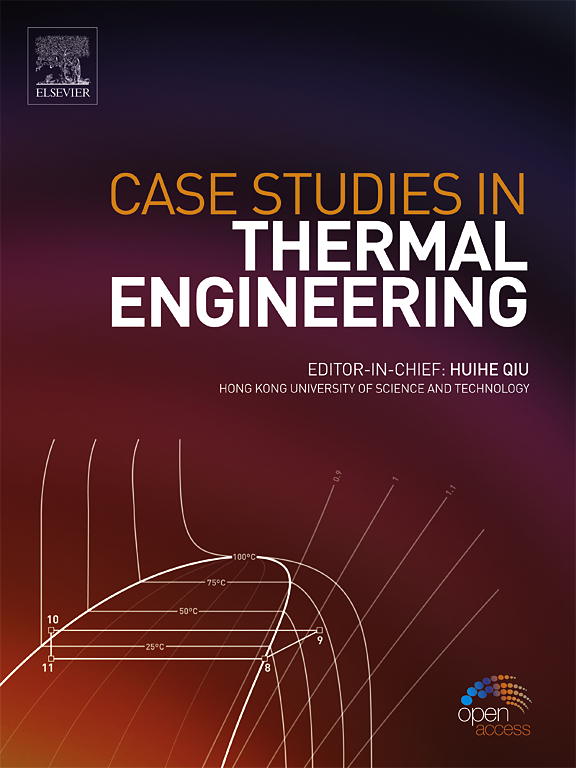Artificial Neural Network based Enhanced Thermal Energy Storage System for Renewable Energy using Nano-Particles
IF 6.4
2区 工程技术
Q1 THERMODYNAMICS
引用次数: 0
Abstract
Thermal energy storage (TES) has appeared to be a viable answer to the world’s energy concerns. Combining Latent Heat Storage Systems (LHSS) with renewable (solar) energy sources has improved the sustainability and efficiency of energy systems worldwide. Phase Change Material (PCM) stores thermal energy during phase transition, making them ideal for thermal control applications. This study offers a comprehensive analytical framework for improving TES systems using advanced materials and innovative configurations, thereby enhancing energy storage efficiency due to the rotational effects of fins. We have integrated V-shaped fins and incorporated nanoparticles基于人工神经网络的纳米可再生能源增强型储能系统
热能储存(TES)似乎是解决世界能源问题的可行方案。潜热储存系统(LHSS)与可再生能源(太阳能)相结合,提高了全球能源系统的可持续性和效率。相变材料(PCM)在相变过程中储存热能,使其成为热控制应用的理想选择。这项研究为使用先进材料和创新配置改进TES系统提供了一个全面的分析框架,从而提高由于鳍片旋转效应而产生的能量存储效率。我们集成了v形翅片,并加入了纳米颗粒和PCM,以提高LHSS的导热性和存储容量。利用ANSYS Fluent软件,采用焓-孔隙率模型来表征PCM的熔化过程。研究了不同转速(0.1转/分、0.2转/分和0.3转/分)下v形翅片对PCM热性能的影响。增强型PCM的温度分布更加均匀有效。通过将旋转v形翅片与纳米颗粒增强的PCM混合,可以提高热性能。结果表明,增加转速可以改善能量储存,在0.3 rpm时增加5.43%,同时降低努塞尔数。这种性能的增强归功于改进的热混合和更有效地利用相变材料,突出了旋转翅片作为热优化策略的潜力。从求解器获得结果后,使用人工神经网络(ann)预测TES性能,这为理解系统内复杂的关系提供了强大的分析工具。
本文章由计算机程序翻译,如有差异,请以英文原文为准。
求助全文
约1分钟内获得全文
求助全文
来源期刊

Case Studies in Thermal Engineering
Chemical Engineering-Fluid Flow and Transfer Processes
CiteScore
8.60
自引率
11.80%
发文量
812
审稿时长
76 days
期刊介绍:
Case Studies in Thermal Engineering provides a forum for the rapid publication of short, structured Case Studies in Thermal Engineering and related Short Communications. It provides an essential compendium of case studies for researchers and practitioners in the field of thermal engineering and others who are interested in aspects of thermal engineering cases that could affect other engineering processes. The journal not only publishes new and novel case studies, but also provides a forum for the publication of high quality descriptions of classic thermal engineering problems. The scope of the journal includes case studies of thermal engineering problems in components, devices and systems using existing experimental and numerical techniques in the areas of mechanical, aerospace, chemical, medical, thermal management for electronics, heat exchangers, regeneration, solar thermal energy, thermal storage, building energy conservation, and power generation. Case studies of thermal problems in other areas will also be considered.
 求助内容:
求助内容: 应助结果提醒方式:
应助结果提醒方式:


